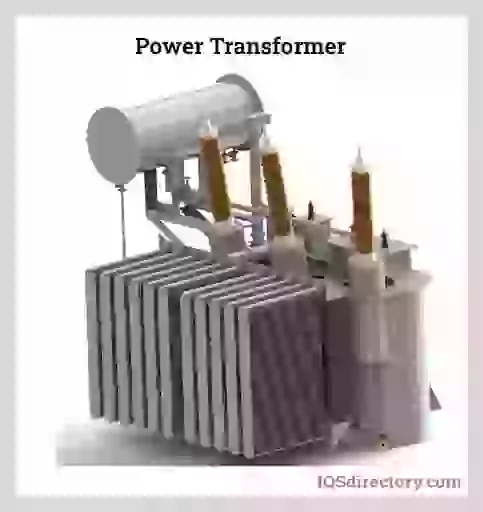What is a power transformer?
Power can be transferred from one circuit to another using a power transformer without affecting the frequency. A transformer is a static device with no spinning or moving elements. The transformer uses an AC source to run. Mutual induction is the underlying idea behind how transformers work.
Power transformer usage
Low voltage electrical power generation is very economically advantageous. The sending end might theoretically receive this low voltage level power. When this low voltage power is transferred, more line current flows, increasing line losses.
However, suppose a power’s voltage level is raised. In that case, the power’s current is decreased, which lowers the system’s ohmic or I2R losses, reduces the cross-sectional area of the conductor, lowers the system’s capital cost, and enhances voltage regulation. To transmit electrical power effectively, low-level energy needs to be increased.
A step-up transformer carries out this function at the sending side of the power system network. This high voltage power must be stepped down to the necessary level at the receiving end with a step-down transformer because it cannot be distributed straight to the consumers. Thus, the electrical power transformer is essential for the transmission of power.
In situations where the ratio of high voltage to low voltage is larger than 2, two winding transformers are typically employed. The autotransformer is the most economical option when there is a ratio of less than two between high and low voltage.
Again, a single-unit three-phase transformer is more economical in a three-phase system than a bank of three single-phase transformers. However, a single three-phase transformer unit is cumbersome to move and must be completely taken out of service if one of the phase windings fails.
Transformer types
Transformers can be grouped in various ways depending on their use, construction, function, etc. Be aware that sometimes these categories overlap; for instance, a transformer may function simultaneously as a step-up transformer and a three-phase transformer. Some of the top books on electrical engineering go into greater detail on transformer operation for more information.
The following are the various transformer types:
1) Step Up and Step Down Transformers
Step-up transformers change the low voltage (LV) and high current values on the transformer’s primary side into the high voltage (HV) and common current values on the transformer’s secondary side.
Step-down transformers change the high voltage (HV) and low current value on the transformer’s primary side to the low voltage (LV) and high current value on the transformer’s secondary side.
2) Transformers in three phases and one phase
Due to its lower cost than single-phase transformers, a three-phase transformer is typically utilised in three-phase power systems. However, a bank of three single-phase transformers is preferable to a single three-phase transformer when size is an issue because it is simpler to transport.
3) Transformers for electrical power, transformers for distribution, and transformers for instruments
In a transmission network, power transformers are typically employed to step up or down the voltage level. It works best at or close to full load and during high or peak loads.
Distribution transformers scale down the voltage to distribute power to residential or business consumers. It features good voltage regulation and runs 24 hours daily at 50% of full load for maximum efficiency.
C.T. and P.T. instrument transformers lower high voltages and current to smaller values than standard instruments can monitor.
4) Autotransformer with Two Winding Transformer
A two-winding transformer is typically utilised when the ratio between the high and low voltage sides is larger than 2.
An autotransformer is more economical when the ratio between the high and low voltage sides is less than 2.
5) Transformers both indoor and outdoor
Outdoor transformers are intended for installation outdoors, as their name suggests.
Whereas (who would have guessed!) indoor transformers are intended for installation indoors.
6) The transformer of the Oil Cooled and Dry Type
This categorization relates to the transformer’s internal cooling system.
Transformer oil serves as the cooling medium in oil-cooled transformers. In contrast, air cooling is used in dry-type transformers.
7) Transformers of the core type
Transformer windings come in two primary varieties: core type and shell type. There are other transformers in the berry style.
A core type transformer includes two horizontal portions called yokes and two vertical legs or limbs. The core has a common magnetic circuit and is rectangular. On both limbs, cylindrical coils (HV and LV) are positioned.
8) The transformer of the Shell Type
Two outside limbs and a core limb make up a shell-type transformer. The middle limb is equipped with both LV and HV coils. There is a twin magnetic circuit.
9) The transformer of the Berry Type
The core of a transformer of the Berry type resembles a wheel’s spokes. This type of transformer is housed in tightly fitted metal sheet tanks full of transformer oil.
Conclusion
Brand Telawne is a transformer manufacturing company that Designs & Manufactures customised Transformer Solutions for the world. They are a Reputed Transformer Manufacturer based within Top 10 in India presently. Apart from Manufacturing and repairing, TELAWNE delivers after sales services to its customers worldwide.
